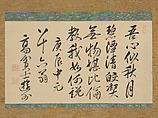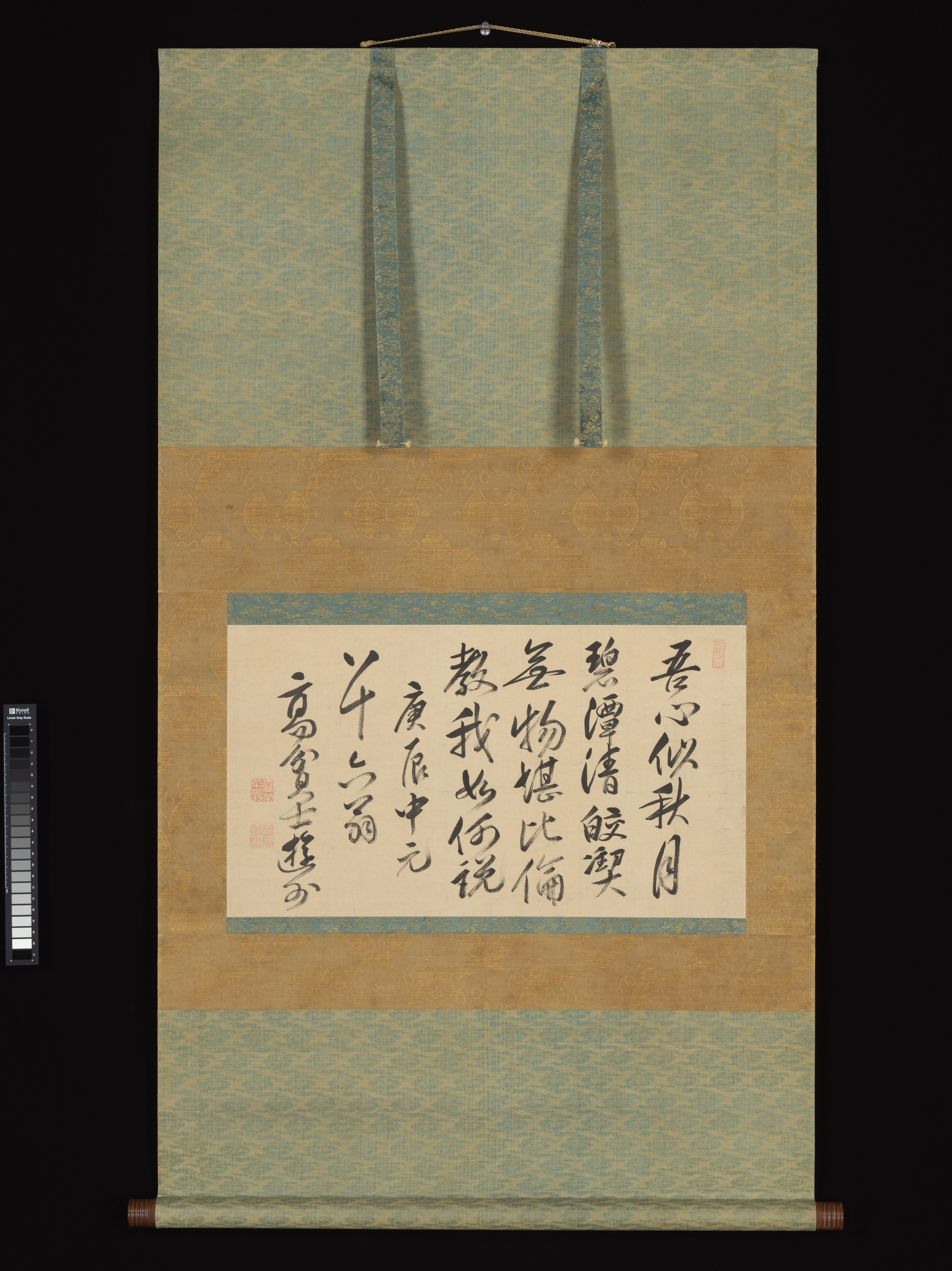Chinese Poem on the Autumn Moon by Hanshan
Baisaō Japanese
Baisaō, an Ōbaku Zen monk whose name literally means “the old man who sells tea,” played a key role in popularizing sencha, a Chinese style of steeped tea. Drawing on the calligraphy tradition established by his Chinese predecessors, he developed a bold, dynamic, yet flowing style. Here, he inscribed a famous verse by Hanshan, an eccentric monk of eighth-century China, which had become popular among Japanese tea adepts:
吾心似秋月 碧潭清皎潔
無物堪比倫 教我如何説
My heart is like the autumn moon,
shining clean and clear
in the green pool.
Nothing in existence rivals it,
instructing me on how to preach.
—Adapted from Burton Watson
Due to rights restrictions, this image cannot be enlarged, viewed at full screen, or downloaded.
This artwork is meant to be viewed from right to left. Scroll left to view more.



